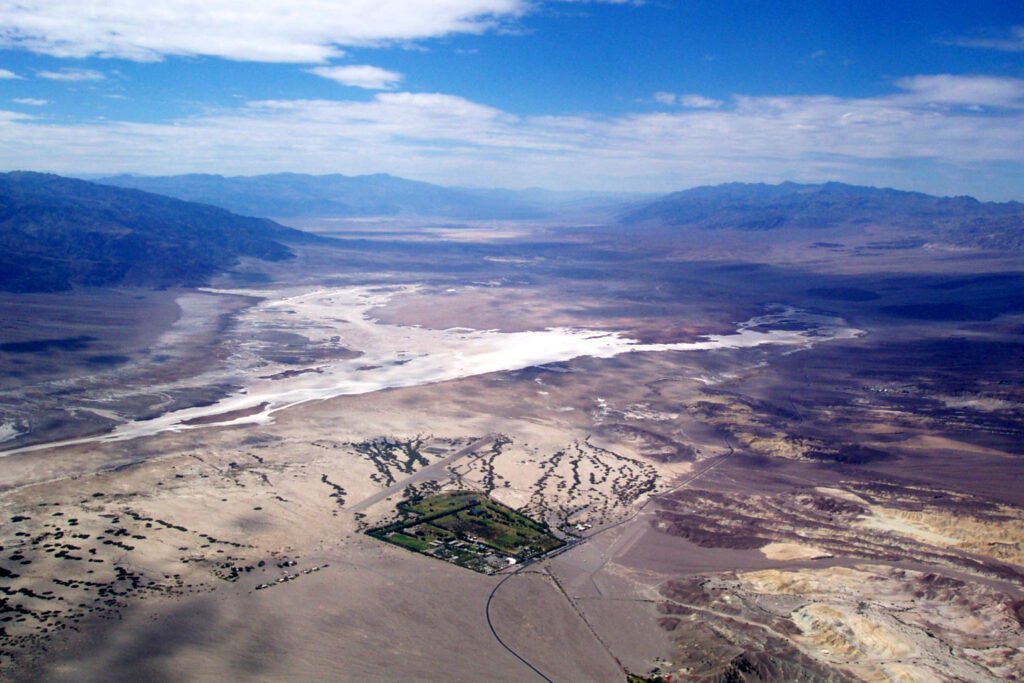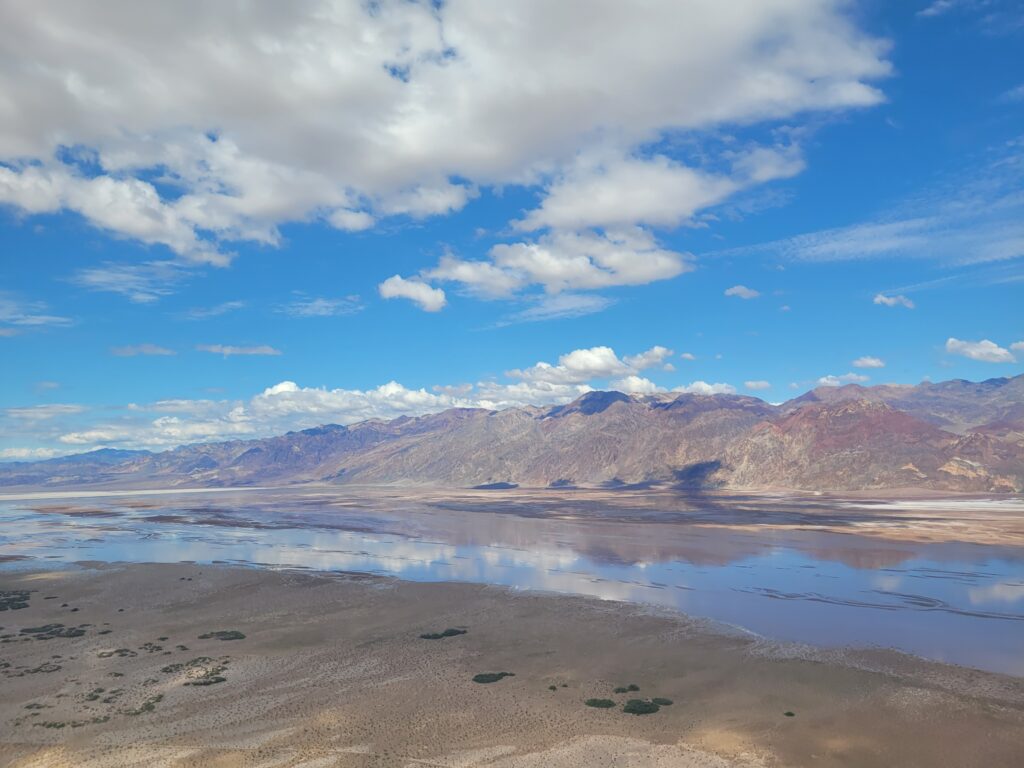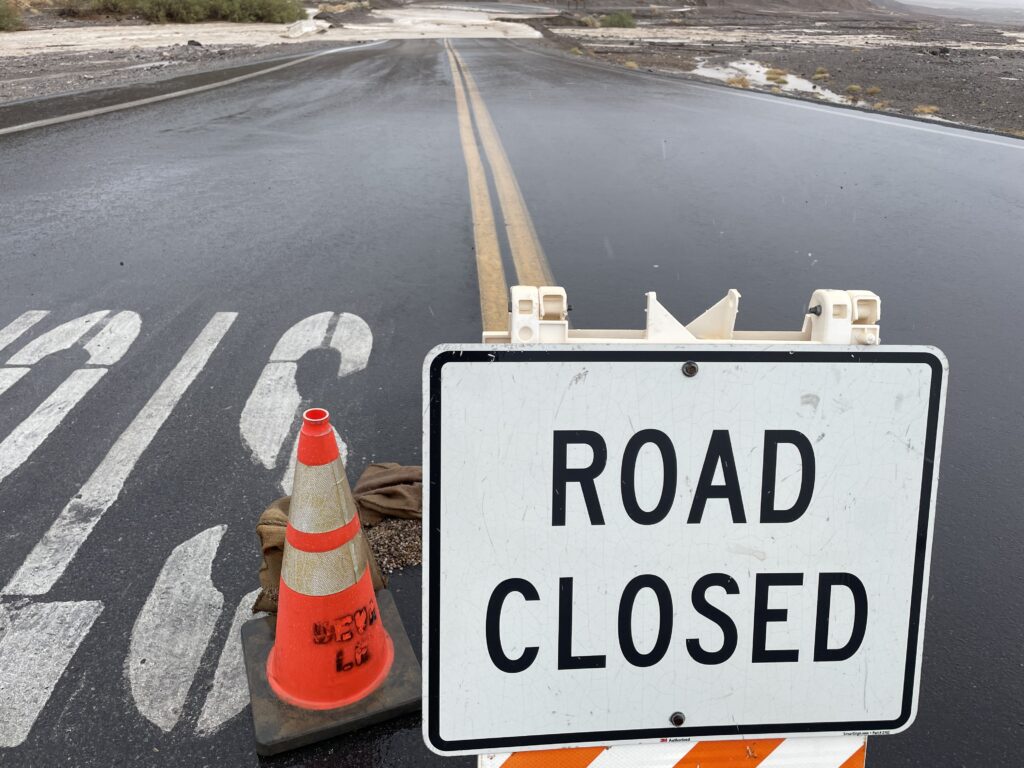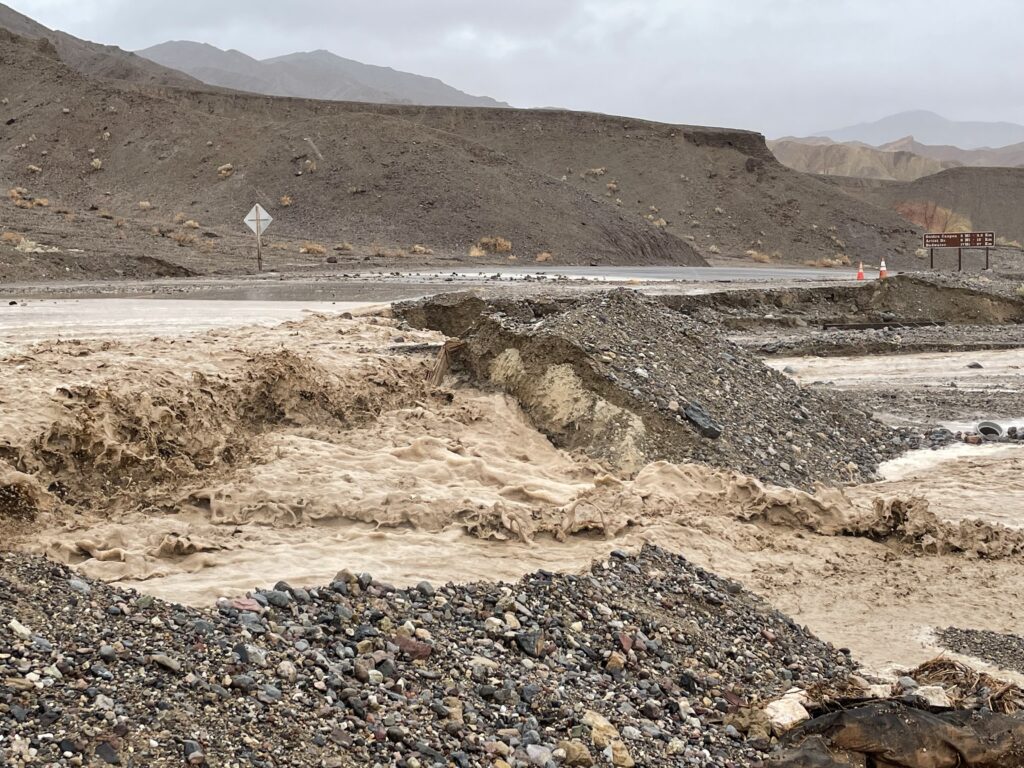Flooding and Death Valley National Park
While they pose risks, flash floods also offer invaluable insights into the geological processes that have shaped Death Valley National Park (Death Valley NP). Observing the movement of water and sediment during a flood event is like watching a time-lapse of geological change. These events, though brief, encapsulate the processes that have been at work for millennia, sculpting the valley’s unique landscape and providing a firsthand look at the dynamic forces at play.
Valley Shape & Flash Floods

Death Valley NP, in simple terms, is shaped like a massive bowl surrounded by towering mountains. This shape is a critical factor in how water behaves here. When the skies open up and it starts to rain, the hard and dry ground of the valley does not allow the water to seep in easily. Instead, the water rushes down mountainsides, collecting in torrents and flooding parts of the valley floor. It is similar to pouring a bucket of water into a bowl; the bowl fills up rapidly. Now, when we talk about the canyons in the valley, things get even trickier. These deep and narrow paths can fill up with water incredibly quickly during a storm, making them potentially hazardous spots. And after the storm subsides, in the flat expanses, you might discover temporary lakes formed from the deluge.
Change Over Time

Over centuries, Death Valley NP has seen a variety of inhabitants and visitors, from indigenous tribes who knew the land intimately to gold seekers hoping to strike it rich. These inhabitants had to adapt and prepare for the unpredictable nature of flash floods. Sudden and intense floods have been a significant force in shaping the land. They erode in one place, deposit sediment somewhere else, alter pathways and sometimes reveal hidden treasures like mineral deposits. With each flood, the landscape undergoes a transformation, however subtle, resulting in the fascinating terrain we see today
Plants, Animals, and Roads

Death Valley NP is not teeming with greenery, but the plants that brave this harsh environment play an essential role in preventing destruction. Their roots grip the soil, offering some defense against erosion during floods. In areas where plants are sparse, floods can wash away the land with little resistance.
The region’s wildlife, adapted to its extreme conditions, also must navigate the challenges brought on by these floods. For instance, some animals seize the opportunity, quenching their thirst from fleeting puddles, while others might find themselves scrambling for higher ground.
Human-made infrastructure, like roads and buildings, is also susceptible to the force of these floods. Repairing and maintaining roads after heavy floods is a constant challenge, and it often comes with a hefty price tag.
Staying Safe and Learning

Park authorities are acutely aware of the dangers posed by flash floods. They have made considerable efforts to keep visitors safe, but it is not just about infrastructure. Educating visitors is a top priority. Through educational efforts, park staff ensure that everyone understands the risks and knows how to act when faced with a flood. And as global weather patterns shift, possibly leading to more erratic rainfall in the region, this education becomes increasingly vital.
Looking Ahead

For scientists and researchers, Death Valley NP is like an open book on the Earth’s history and processes. Its unique conditions provide invaluable data on desert ecosystems, flash floods, and landscape evolution. Across the park, monitoring stations continuously gather data, helping researchers gain insights and predict future patterns. This ongoing research does not just satisfy scientific curiosity; it plays a pivotal role in shaping safety measures, conservation efforts, and public education campaigns. By understanding the past and monitoring the present, the park can prepare for the future, ensuring that Death Valley NP remains a natural wonder for generations to come.
